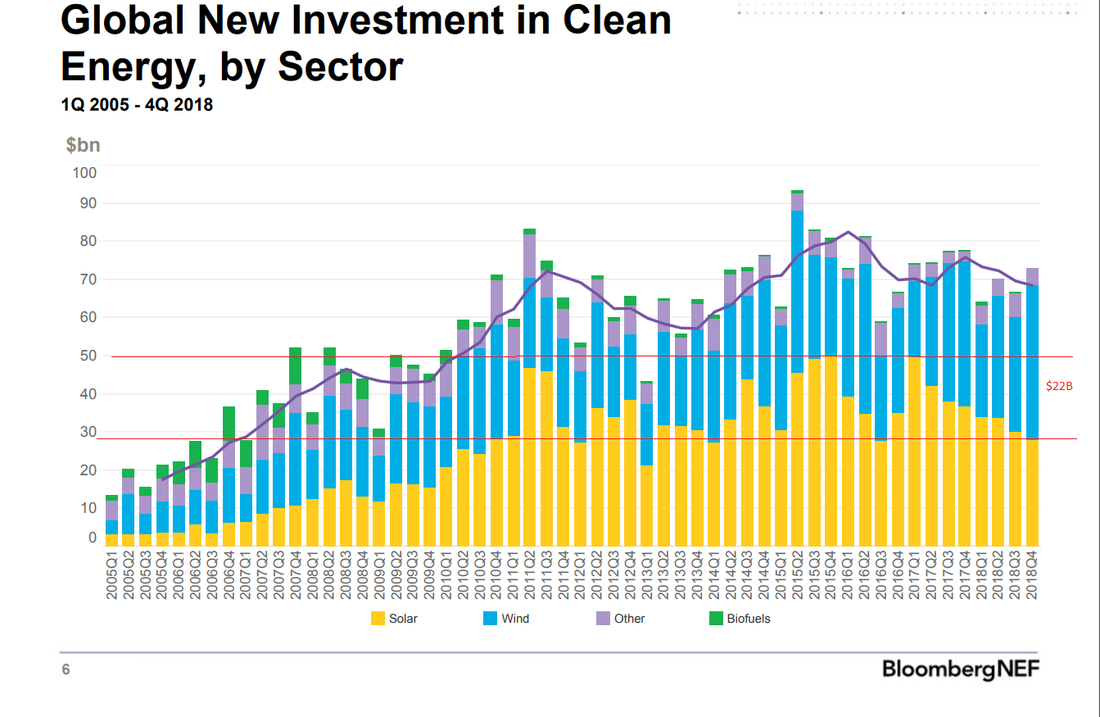|
BNEF has published their latest renewable energy investment report that covers 2018. It shows little change from previous years. Overall clean energy investment has been roughly constant at about $70B/quarter for the eight years since 2011, as shown by the yellow line in the graph above. The report focuses primarily on investment and breaks the data down by geography and type of energy. Over the eight years there have been significant shifts. The main change has been Europe declining and China growing. America has been fairly constant. In 2018 China fell and Europe recovered a little mostly due to Spain. In type of energy, overall yearly investment in solar has declined by $22B/quarter over the last two years as shown in the next graph. Focusing on solar, 2018 investment was $130.8B and capacity installed grew to 108GW. Other analysts however don’t think that capacity installed exceeded 100GW. Either way this says that Solar PV average cost was around $1.30/W worldwide. I have covered the BNEF report in many previous blog posts. In this post from 2016 I discussed the falling cost trend in $/W. In 2010 PV average cost was about $6.40/W and in 2015 it was about $3.20/W. The 2018 average cost of $1.30/W represents an amazing fivefold reduction since 2010. Costs are anticipated to continue falling.
Paradoxically, so far falling PV costs have resulted in increasing PV capacity but reducing PV investment. A possible explanation is that reduced costs have resulted in reduced government subsidies. The implication is that without subsidies current costs are still too high to spur growth in investment. Taking the big picture view, current investment levels in clean energy though over $300B/y are not growing and are at least a factor of twenty too low at current costs to reduce CO2 emissions by 2050. The sustained decline in solar PV investment despite dramatic cost reduction is deeply discouraging as it is counter to the perception that solar PV is succeeding on a path to rapid and sustainable growth at a level that can reduce CO2 emissions. From a StratoSolar perspective the dramatic PV cost reductions make Stratosolar an even more viable clean energy alternative. With PV at these lower costs, the increased utilization of Stratosolar is capable of providing electricity at amazingly low prices, well below the cheapest and dirtiest fossil fuels. No long duration intermittency from clouds and weather and the option for cheap, reliable gravity energy storage make the story even more compelling. By Edmund Kelly
Comments
|
Archives
December 2023
Categories
All
|
|
© 2024 StratoSolar Inc. All rights reserved.
|
Contact Us
|



 RSS Feed
RSS Feed